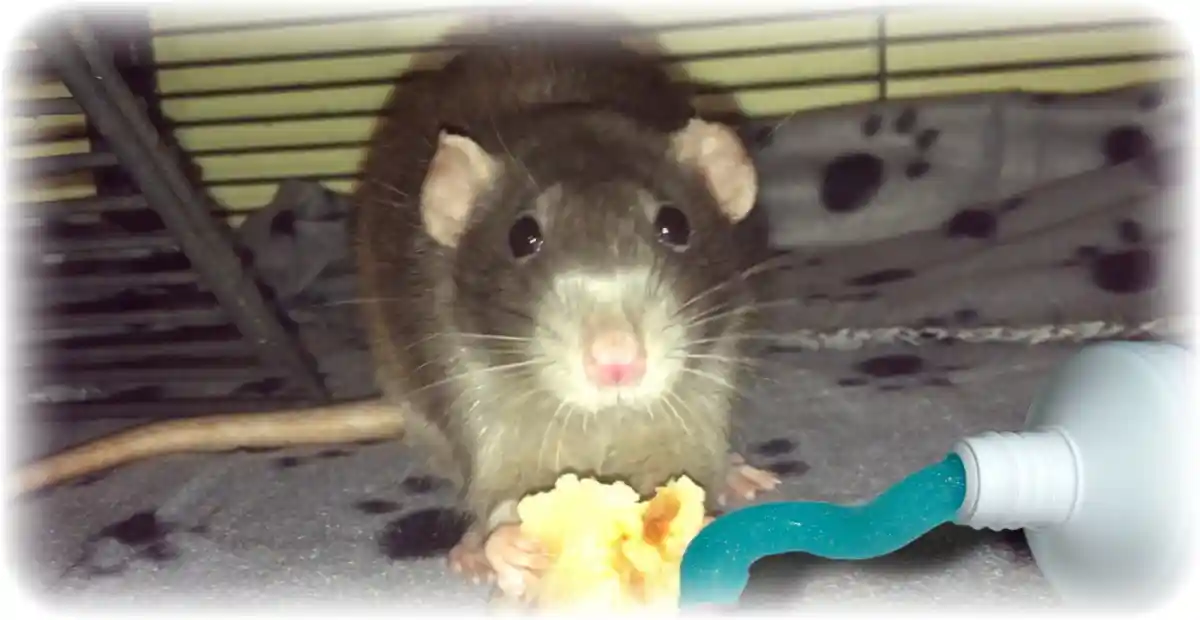If you have a garden, rats will likely break in to sample your produce. Rats commonly plague vegetable gardens, fortunately, there are methods to stop rats eating vegetable garden. The typical step is to render your garden less appealing to rats by eliminating their hiding spots, standing water, and protein sources. Also discussed in this guide are home remedies that can discourage rats from your vegetable garden.
How to stop rats eating vegetable garden

Consider the methods below to stop rats eating vegetable garden:
1. Spray peppermint oil or a homemade pepper
This method involves drenching cotton balls in undiluted peppermint oil and dispersing them throughout the area. You must always replace the balls every 2-3 days or following rainfall. Alternatively, you can make your own pepper spray by mixing hot pepper flakes, water, and dish soap.
Transfer the mixture to a spray bottle and apply it around your garden.
Although some gardeners and homeowners believe in peppermint oil as a rat repellent, there is no substantial evidence for this claim. On the other hand, there is reasonable evidence suggesting that pepper spray can deter animals such as rabbits and deer, but this evidence is less supported against rats.
2. Grow catnip or other mint varieties
The aromatic properties of catnip, as well as other mint plants, could potentially deter rats, thereby, stopping them from eating vegetable garden. The entire mint family, including catnip, grows effortlessly. Due to its vigorous nature, you want to plant mints in containers and place them in different areas of your vegetable garden.
The blossoms of catnip can attract bees, which can be beneficial to your vegetable garden, while the leaves can be harvested and used for a calming herbal tea.
3. Build a fence around your garden
Experts suggest building the fence with potent herbs such as basil or thyme and vegetables such as onions or garlic to deter rats from your vegetable garden. It’s recommended to plant a selection of these aromatic choices along the outer perimeter of your vegetable garden.
Alternatively, you can install metal border fencing with narrow openings. Rats can squeeze a rat can get through a 20 mm hole, according to Anticimex,¹ so get wire fencing with smaller openings. Try getting metal fencing over plastic or wood options because rats can gnaw through wood.
Your fence should be at least 1 foot (30 cm) high since rats can potentially climb over it. To take precautions against rats’ ability to tunnel, bury the fence at a depth of at least 3 inches (7.6 cm) underground.
Inspect the entire perimeter of your vegetable garden fencing and seal any gaps—rats are exceptionally good at finding even the smallest openings.
4. Make regular changes to your garden layout
Firstly, acknowledge that rats are resourceful and persistent critters, and complete prevention may not always be guaranteed. Now, introduce regular changes to your vegetable garden layout to disorient the rats.
There is some evidence suggesting that rats exhibit neophobic behavior, meaning they have an aversion to new, different, or unfamiliar surroundings.² Therefore, if you frequently restructure your vegetable garden, you might sufficiently annoy the rats, forcing them to seek alternative places.
5. Employ pet services
Consider enlisting the assistance of your pet dog or cat to patrol the area on your behalf. If your vegetable garden is in a secure space where your pet can safely roam, that should help stop rats eating vegetable garden.
Your pet’s mere presence, along with its distinctive scent, can be enough deterrent to rats. Moreover, they might even catch a few rats, further contributing to your pest control efforts.
However, pets capturing rats can potentially expose them to diseases or infections. Moreover, if your pet captures a rat that has consumed poison, it may also be affected by toxicity.
in addition, you should not solely rely on the regular presence of your pet to deter rats if your garden provides a favorable environment for them. Do note that your pet could snuggle and cause damage to your vegetable garden while on duty.
6. Invest in sonic rodent repellent
A sonic rodent repellent emits high-frequency sounds believed to repel rats and other rodents. However, although they may be effective in the short term, rats may eventually become used to the noise and return to your vegetable garden.
Sonic rodent repellers are available online or at home improvement stores in different builds, including plug-in, battery-powered, or solar-powered varieties. Unfortunately, no substantial evidence supports the efficiency of sonic rodent-repellent devices. Even the Federal Trade Commission’s Division of Enforcement sent warning letters to manufacturers and retailers of ultrasonic pest-control devices urging them to support the efficiency claims about sonic devices with scientific evidence.³
7. Take away rat shelter and food
You can achieve this by clearing low-lying brush, tall weeds, and other hiding spots in your vegetable garden. Rats typically seek hidden areas for nesting spots, so do the following:
- Maintain a well-trimmed surrounding lawn, regularly remove weeds, and trim or eliminate ground cover plantings.
- Clear away piles of wood, stone, or other materials that can serve as potential hiding spots.
- Simplify your vegetable garden. The idea is to prioritize the growth of desired vegetables and reduce decorative-only plantings and unnecessary items for an uncluttered space.
Regarding water sources, get rid of standing water, dripping pipes, and other sources of water in your vegetable garden. While a vegetable garden requires water, you don’t want to leave stagnant water around.
Make sure those areas where water accumulates during rainstorms are leveled off, and keep containers such as buckets and watering cans covered or overturned to prevent water collection. It also helps to repair any leaks in your water spigot or hose to prevent water availability for rats.
Experts strongly recommend that you avoid placing a birdbath or any other standing water source near your vegetable garden. Apart from attracting rats, standing water can also serve as a breeding ground for mosquitoes, posing an additional concern to your garden.
8. Remove rat food sources
It is not practical to eliminate vegetable plants from your garden, however, you can minimize other possible rat food sources including the following:
- Wild animal food: Birdseed, should not be dispersed on the ground. Instead, use bird feeders to keep them from rats.
- Pet food: Ensure that bagged, served, or leftover pet food is kept away from the vicinity. Remove any spills or uneaten pet food.
- Household trash: Dispose of household trash in a durable trash can with a secure lid, ensuring it is kept outside the garden area.
- Dog droppings: Be mindful of pet droppings as well, as rats may occasionally indulge in dog feces.
- Grubs: They attract many rats to your garden. Experts recommend you use milky spore or other treatments to eliminate lawn grubs.
- Japanese beetles: You also want to reduce the Japanese beetle population to save your vegetable garden.
9. Secure your garden’s compost materials
You will need a plastic or metal compost bin to stop rats eating vegetable garden. Compost piles are attractive to rats as they provide a source of food, warmth, and nesting material. Store your compost in a drum-style container that features a well-fitted and secure lid, effectively preventing rats from accessing it.
When adding food scraps to your compost, limit it to fruit and vegetable remnants, and avoid meats, grains, oils, and fats—these can attract rats to the garden.
Rats are omnivorous creatures, so they rely on protein and fat sources for sustenance. Therefore, when you get rid of such resources in your vegetable garden, it is likely that rats will want out of your garden.
10. Rethink the use of mulch
If possible, minimize or stop the application of garden mulch. A thick layer of mulch can assist in weed control, however, it also offers hiding places and nesting material for rats in your vegetable garden.
If you choose to mulch, use a thin layer of dense wood chips instead of a fluffy straw material. An alternative consideration is using gravel as a mulching material to reduce the hiding spaces of rats in your vegetable garden.
11. Harvest your veggies early
You don’t want your fruits, vegetables, nuts, or seeds falling on the ground—that will attract rats. Regular harvesting, perhaps even 1-2 times daily depending on the circumstances, can significantly decrease the amount of food available for rats, thus getting rid of fruit rats.
Whenever you harvest or tend to your garden, pick up anything that has already fallen onto the ground. You can use harvesting guides tailored to the specific vegetables you are growing and your climate zone for valuable information on the ideal timing and techniques for harvesting your vegetables effectively.
Refrain from exposed traps or rat poison
Don’t use unprotected snap traps or handle poison yourself. Although these pest control tools are available for purchase at home centers and online, both rat-sized snap traps and rodent poisons are risky. Unsecured poison blocks can be highly dangerous to wildlife, pets, and children. Likewise, rat traps, which are larger and exert a more forceful snap compared to mouse traps, can cause serious harm to pets and children if mishandled.
Furthermore, in some locations, it may be illegal to use rodent poison, even within an enclosed bait station. Get to know your city’s regulations regarding pest control methods before taking any action.
If you have pets or children, invest in covered traps instead of covered poison to stop rats eating vegetable garden. If you decide to handle the infestation independently using traps or poison, only use versions that are enclosed within containers that are resistant to access by children and pets.
Don’t try to create safety enclosures on your own. Instead, buy traps or poison blocks that are already pre-enclosed in secure containers. You can find these products at home centers or through online retailers.
Signs of rats in vegetable garden and dealing with an infestation

1. Determine rat presence in your vegetable garden
Look for indications of rat infestation such as tunnel holes, droppings, and rat runs. Rats are nocturnal critters, so they are not typically visible by day unless they are in dire need of food. However, if you happen to spot one, you likely have more rats in the garden. Inspect closely for the following signs of infestation:
- Circular openings in the soil, measuring approximately 2-3 inches (5.1-7.6 cm) in diameter. Rats use these holes as entry points to the rats’ tunnels, which can stretch for considerable distances.
- Cylindrical droppings that are approximately 0.5 inches (1.3 cm) in length.
- Greasy markings along walls, curbs, or garden borders. Rats leave scent markers as they traverse straight pathways adjacent to structures.
- Seeds disappear from the ground without any visible disturbance to the soil.
2. Contact your local pest control professional to stop rats eating vegetable garden
Rats have a rapid reproductive rate, making infestations tough for the average homeowner to handle. If you observe substantial signs of rat activity, engage the services of a licensed and experienced pest control company immediately. They have proper rat treatment plans that efficiently expel rats from your vegetable garden.
Resources
- “Rats and mice – unwanted house guests!” Anticimex
- “Food Neophobia in Wild Rats (Rattus norvegicus) Inhabiting a Changeable Environment—A Field Study.” PubMed Central
- “FTC Warns Manufacturers and Retailers of Ultrasonic Pest-control Devices”. FTC






